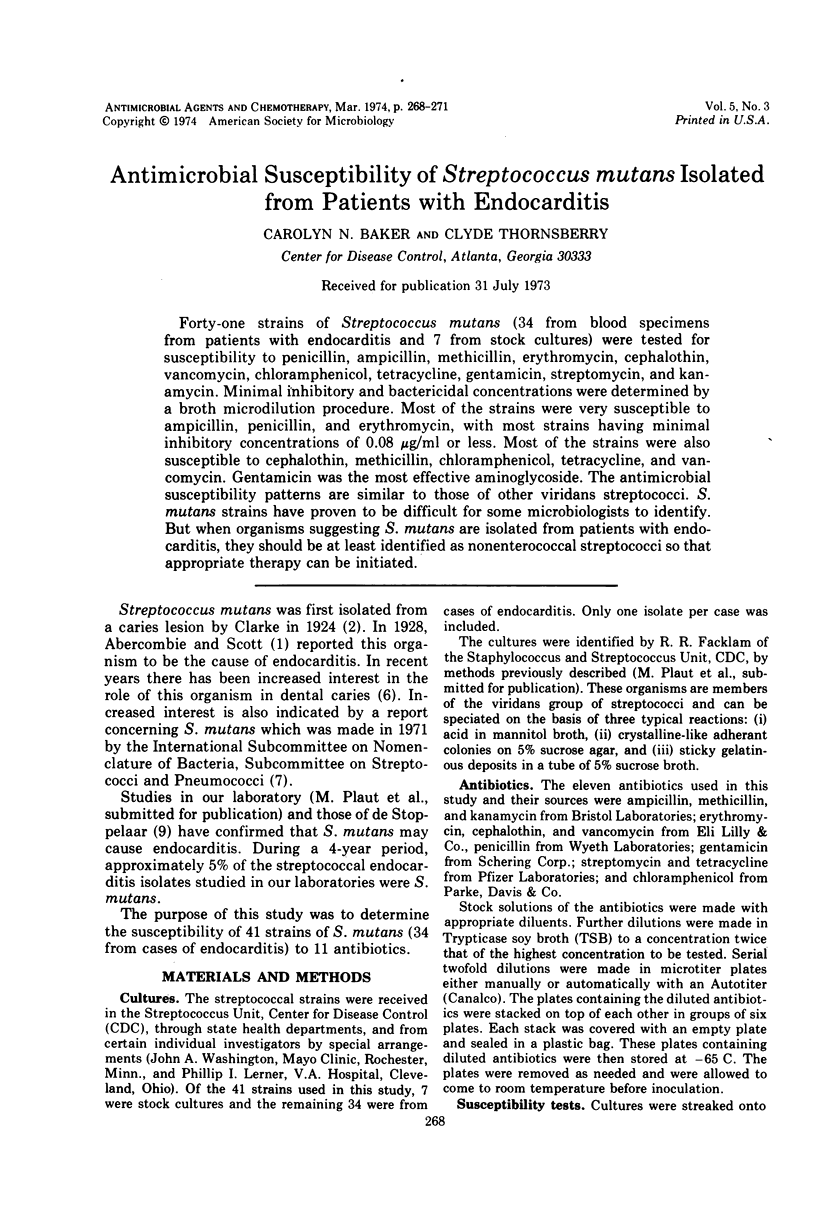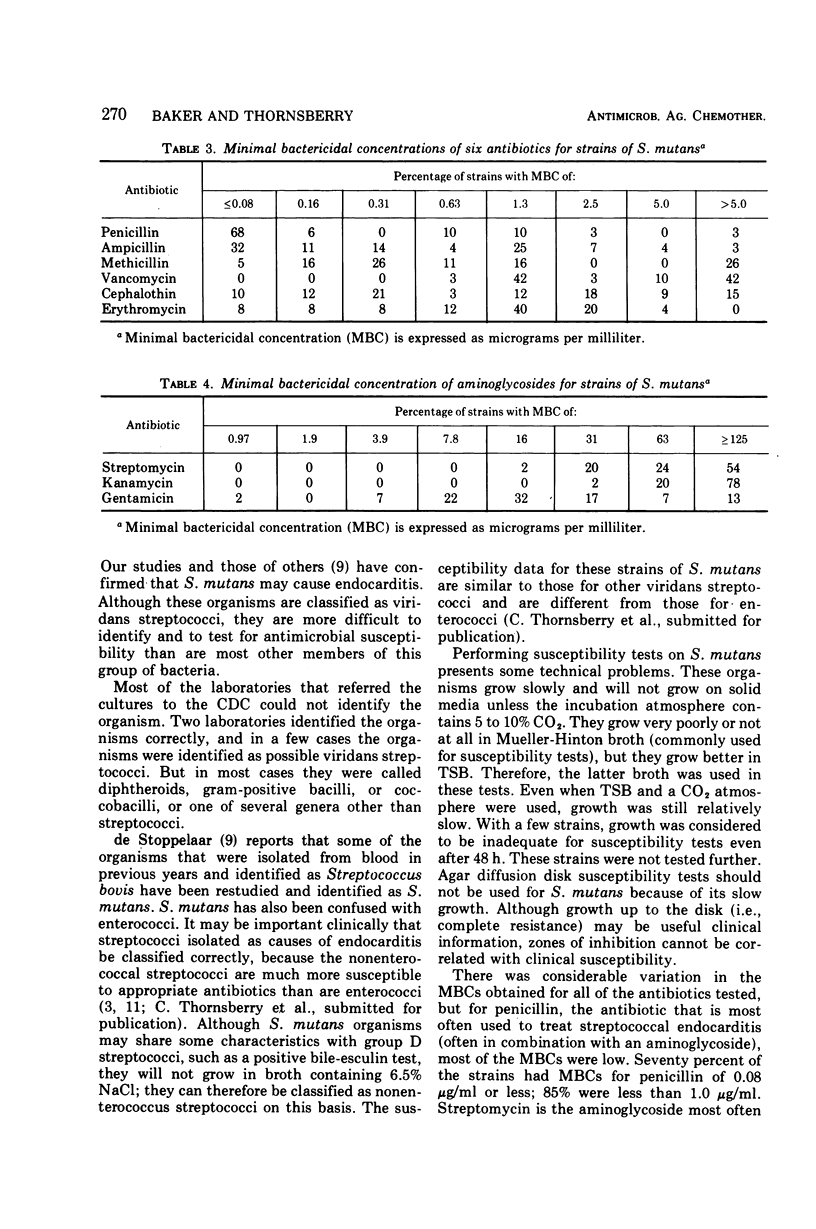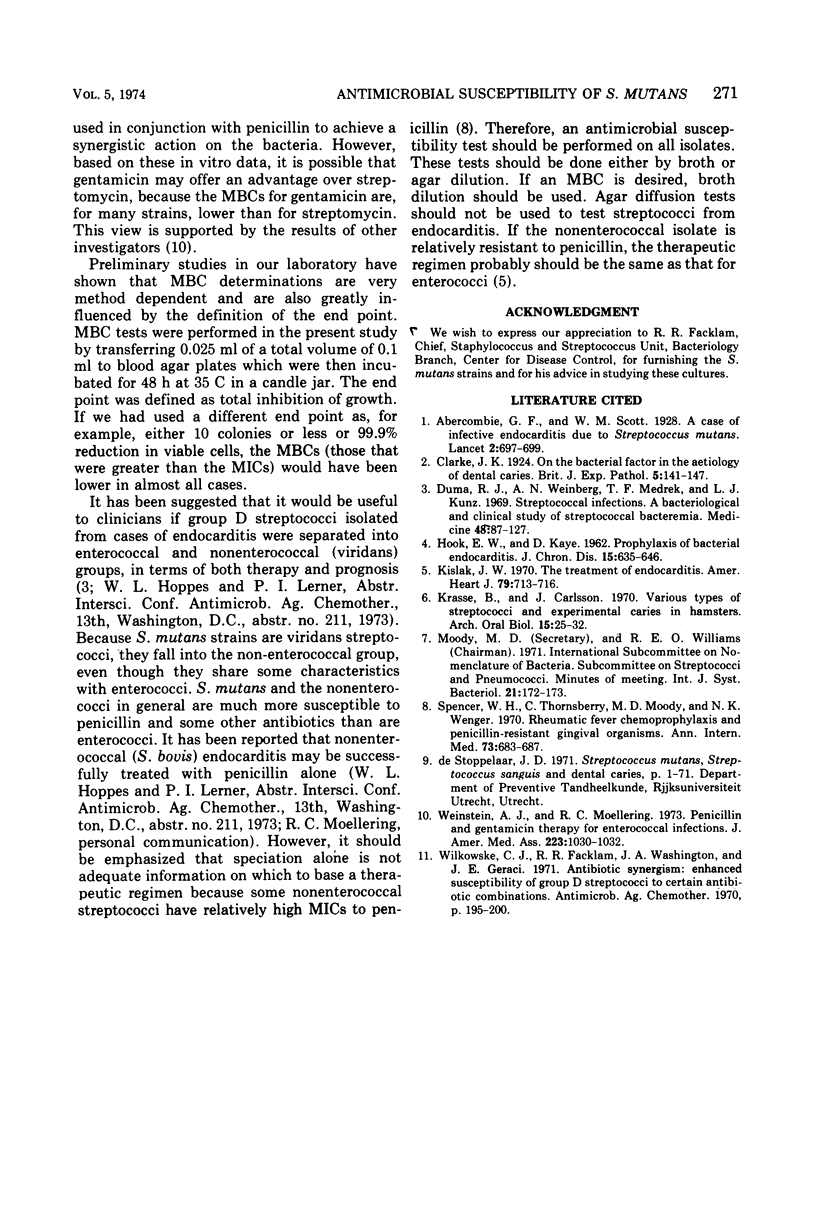Abstract
Forty-one strains of Streptococcus mutans (34 from blood specimens from patients with endocarditis and 7 from stock cultures) were tested for susceptibility to penicillin, ampicillin, methicillin, erythromycin, cephalothin, vancomycin, chloramphenicol, tetracycline, gentamicin, streptomycin, and kanamycin. Minimal inhibitory and bactericidal concentrations were determined by a broth microdilution procedure. Most of the strains were very susceptible to ampicillin, penicillin, and erythromycin, with most strains having minimal inhibitory concentrations of 0.08 μg/ml or less. Most of the strains were also susceptible to cephalothin, methicillin, chloramphenicol, tetracycline, and vancomycin. Gentamicin was the most effective aminoglycoside. The antimicrobial susceptibility patterns are similar to those of other viridans streptococci. S. mutans strains have proven to be difficult for some microbiologists to identify. But when organisms suggesting S. mutans are isolated from patients with endocarditis, they should be at least identified as nonenterococcal streptococci so that appropriate therapy can be initiated.
Full text
PDF



Selected References
These references are in PubMed. This may not be the complete list of references from this article.
- HOOK E. W., KAYE D. Prophylaxis of bacterial endocarditis. J Chronic Dis. 1962 Jun;15:635–646. doi: 10.1016/0021-9681(62)90033-4. [DOI] [PubMed] [Google Scholar]
- Kislak J. W. The treatment of endocarditis. Am Heart J. 1970 May;79(5):713–716. doi: 10.1016/0002-8703(70)90291-7. [DOI] [PubMed] [Google Scholar]
- Krasse B., Carlsson J. Various types of streptococci and experimental caries in hamsters. Arch Oral Biol. 1970 Jan;15(1):25–32. doi: 10.1016/0003-9969(70)90142-1. [DOI] [PubMed] [Google Scholar]
- Spencer W. H., 3rd, Thornsberry C., Moody M. D., Wenger N. K. Rheumatic fever chemoprophylaxis and penicillin-resistant gingival organisms. Ann Intern Med. 1970 Nov;73(5):683–687. doi: 10.7326/0003-4819-73-5-683. [DOI] [PubMed] [Google Scholar]
- Weinstein A. J., Moellering R. C., Jr Penicillin and gentamicin therapy for enterococcal infections. JAMA. 1973 Feb 26;223(9):1030–1032. [PubMed] [Google Scholar]
- Wilkowske C. J., Facklam R. R., Washington J. A., 2nd, Geraci J. E. Antibiotics synergism: enhanced susceptibility of group D streptococci to certain antibiotic combinations. Antimicrob Agents Chemother (Bethesda) 1970;10:195–200. [PubMed] [Google Scholar]


